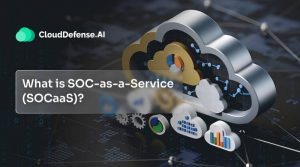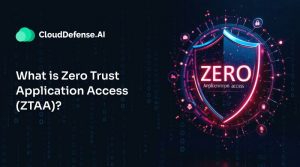Businesses today rely on cloud systems more than ever, but with that comes serious risks. Hackers, breaches, ransomware—it’s out of control. Companies need strong strategies to protect their data, and let me tell you, not everyone is doing it right.
This guide will break down the top 13 cloud security best practices you need to follow. It’s straightforward, effective, and will give you the edge in staying secure in this ever-changing world.
Why Is Cloud Security Crucial?
Cloud security ensures your data, applications, and infrastructure in the cloud remain safe from cyber threats. Without it, businesses risk massive financial and reputational damage. Consider this:
In 2013, the average cost of a data breach for organizations in the U.S. was $5.4 million. By 2023, that figure jumped to $9.48 million per breach, marking a staggering 75.5% increase. That’s not just a number; it’s a wake-up call for businesses relying on cloud solutions.
Here’s why cloud security matters:
- Protecting sensitive data: Modern businesses handle enormous volumes of sensitive information, from customer records to proprietary data. Cloud security prevents unauthorized access, data leaks, and breaches that can cripple your operations.
- Ensuring business continuity: Cyberattacks don’t just steal data; they cause disruptions. Effective security measures ensure systems stay operational, even during attempted breaches, minimizing costly downtime.
- Meeting regulatory requirements: Industries like finance, healthcare, and retail face strict compliance mandates. Robust cloud security ensures you align with GDPR, HIPAA, or PCI DSS, avoiding hefty penalties.
- Real-time threat detection: Cloud environments are prime targets for ransomware, malware, and phishing attacks. Advanced security systems identify and neutralize these threats before they escalate.
- Maintaining brand reputation: Customers expect their data to be safe. A single breach can erode trust, causing long-term damage to your reputation and customer relationships.
Cloud security isn’t just a defensive strategy—it’s a growth enabler. By investing in the right protections, businesses can confidently adopt cloud solutions without worrying about the hidden risks. In an era of constant threats, staying secure isn’t just smart; it’s necessary.
What are the Biggest Threats to Cloud Security?
Before diving into the best practices to keep your cloud secure, we will first understand the various threats that can potentially compromise its integrity. Here are some of the biggest risks your cloud might face:
Misconfiguration
One wrong click, and your entire cloud environment can be exposed. If your cloud settings are off—whether by mistake or on purpose—it can open the door to unauthorized access, expose your sensitive data, or disrupt your operations.
Unauthorized Access
Cybercriminals are constantly on the lookout for weak links in the chain. Phishing scams, malware, and stolen credentials are just some of the ways bad actors gain entry into your cloud environment. Once they’re in, they can steal data, cause damage, or compromise your entire infrastructure.
Insecure APIs and Applications
APIs are like the front door to your cloud, and if they’re not secured properly, attackers can use them to break in. Applications with hidden vulnerabilities can also be an entry point for attackers, giving them unauthorized access to your data.
Insider Threats
The biggest threats aren’t always from the outside. Employees or contractors with access to your cloud system can be a major risk—whether they’re acting maliciously or just making a mistake. This can include theft, data leaks, or sabotage from people within your own organization.
Data Breaches and Leaks
This is the worst-case scenario. A data breach exposes sensitive information—customer data, intellectual property, you name it. Breaches can happen through hacking, human error, or even physical loss of devices. Once that data is out, it’s often too late to recover.
Advanced Persistent Threats (APTs)
These are highly sophisticated, long-term attacks. Attackers will infiltrate your system slowly, taking their time to gather data and avoid detection. They can steal sensitive information or cause long-term damage without you even knowing it.
Lack of Visibility
You can’t protect what you can’t see. Without proper monitoring and visibility into your cloud environment, it’s easy for threats to go unnoticed. If you don’t have a clear view of your cloud’s security status, you’re essentially leaving the door wide open for attackers.
Top 10 Best Practices For Robust Cloud Security
1. Leverage CloudSecOps and AppSecOps Solutions
When it comes to cloud security, you’ve got to stay ahead. Implementing CloudSecOps and AppSecOps solutions is a major step in that direction. What does this really mean? Simple. It’s about integrating security into every part of your cloud operations. You don’t just slap on security at the end—security needs to be built into your processes from the start.
Let’s break it down:
- CloudSecOps: It’s about embedding security directly into your cloud operations. Think of it as building a secure foundation for your cloud infrastructure from day one.
- AppSecOps: Similar to CloudSecOps, but with a focus on your applications. Every app you deploy should be secure, not just the cloud itself.
Here’s why these solutions are crucial:
- Automate security processes: With CloudSecOps and AppSecOps, security is not something you do once in a while—it’s part of your daily routine.
- Shift left: This means addressing security issues early in the development process, not waiting until later. You find and fix problems sooner, saving time and money.
- Continuous monitoring: These solutions provide ongoing protection. Your cloud environment is constantly evolving, and security needs to evolve with it.
Are you doing enough to secure your apps and operations? With CloudSecOps and AppSecOps, you’ll stay ahead of the curve and prevent potential issues before they become costly problems. Don’t wait for an attack to realize you’re vulnerable—take action now.
2. Secure the Cloud Perimeter
Cloud networks are more flexible than ever with software-defined networking (SDN), which allows you to implement stronger security guardrails. Start with basic workload segmentation between virtual networks. Only allow the necessary communication between them—no more, no less.
- Restrict incoming traffic: Use network or application layer firewalls to control access to your applications.
- Web Application Firewall (WAF): Protect against common threats like SQL injections, data exposure, and cross-site scripting by using a WAF that detects and defends against OWASP top threats.
- DDoS Defense: A multilayer defense strategy is essential to block DDoS attacks. All cloud providers offer built-in tools to help safeguard your workloads.
Deploy an effective firewall as your first line of defense. Cloud-native firewalls or advanced third-party tools can provide intrusion detection, traffic analysis, and threat detection, ensuring your perimeter stays secure.
3. Implement a ‘Zero Trust’ Approach to Security
Zero Trust is a powerful security model where no access request is trusted by default. Every request, whether from inside or outside the network, must be verified before being granted access. This approach minimizes the risk of unauthorized access, especially in complex cloud environments where employees access data from multiple locations.
- Verification first: User identity and device health must be verified before granting any access.
- Least privilege: Users get the minimum level of access required for their tasks.
- Continuous monitoring: Constantly check for any potential threats.
A 2024 Gartner Survey found that 63% of organizations globally have adopted a Zero Trust model for cloud security. It’s clear—this strategy is becoming a necessity to protect critical resources in today’s digital world.
4. Protect Your Data with Encryption
Encryption is non-negotiable in today’s cloud security space. It makes sure data stays secure, whether it’s stored or in transit. You must encrypt everything.
- Data at rest: Encrypt your stored data, even backups. Cloud providers offer built-in encryption tools, but for sensitive data, consider extra measures.
- Data in transit: Use Transport Layer Security (TLS) or Secure Sockets Layer (SSL) to protect data as it moves. This keeps it secure, even if someone intercepts it.
- Encryption keys: Your encryption keys are critical—treat them as your crown jewels. Mismanage them, and your security is compromised.
Cloud providers typically offer encryption options, but you can also use your own encryption keys (BYOK) for additional control. Keep your encryption practices tight—because if the data is not encrypted, you’re leaving it vulnerable.
5. Adopt the ‘Shift Left’ Approach for Better Security
“Shift Left” means incorporating security into the development process early on—way before the project reaches the finish line. Instead of fixing security flaws after the fact, like traditional methods, this proactive approach identifies and addresses risks right from the start.
- Early detection: By catching vulnerabilities early, you prevent them from becoming major problems later.
- Reduce threats: Fixing security issues before they become threats lowers the chances of breaches.
- Save resources: It’s cheaper and more efficient to address security at the start than deal with the fallout later.
When you shift security left, your development teams can build and deploy applications more securely. It creates a continuous security culture that evolves with the project, making sure that security isn’t an afterthought but an ongoing priority.
6. Ensure Your Infrastructure as Code (IaC) Is Secure
Securing Infrastructure as Code (IaC) goes beyond simple secure coding—it’s about aligning configurations with trusted security standards. You need a comprehensive approach to detect risks early and ensure that every piece of code follows the best security practices.
- Use SAST/DAST tools: Implement Static Application Security Testing (SAST) to find misconfigurations early, and Dynamic Application Security Testing (DAST) to validate security at runtime.
- Avoid hardcoded secrets: Parameterize your templates to keep sensitive data out of your code.
- Manage secrets securely: Use tools like AWS Secrets Manager to securely store and access sensitive information.
- Enforce least privilege: Limit access by applying the principle of least privilege on all resources.
By incorporating these practices, you can catch vulnerabilities before they become problems, making your IaC secure from start to finish.
7. Keep an Eye Out for Misconfigurations
Misconfigurations are often the weak link in cloud security. In fact, many successful breaches start with a simple misstep in how services are set up. To prevent this, you must integrate Cloud Security Posture Management (CSPM) solutions into your system.
- Monitor continuously: CSPM tools constantly monitor for any misconfigurations that could put your cloud at risk.
- Follow best practices: These tools evaluate your cloud setup against industry standards or company-specific guidelines, giving you a clear picture of security.
- Security score: They provide a security score that shows how secure your cloud is. A high score means you’re doing things right.
- Identify and correct: CSPM solutions alert you to any misconfigurations so you can quickly fix them before they become a problem.
Using CSPM tools is a smart way to stay ahead of threats and ensure your cloud deployment remains secure.
8. Proper Access Management
When it comes to cloud security, the control plane is where everything happens. It’s where the power lies, so you need to secure it properly. By using native cloud services for identity and access management (CIEM), you can control who has access to what and keep things running smoothly.
- Role-based access: Implement fine-grained access controls based on user roles to ensure only the right people can access critical resources.
- Seamless integration: Leverage tools to easily integrate on-premises solutions, like Active Directory, with cloud-native identity services for a smooth single sign-on experience.
- Least privilege: Stick to the principle of least privilege—only give users access to the resources they absolutely need.
Good access management keeps your cloud environment secure and ensures that only authorized users have the power to change or view critical data. Keep control tight, and your cloud will stay secure.
9. Secure Your Endpoints
For improving safety in the cloud, it is very important to give top priority to endpoint security. Since endpoints have a direct connection with the cloud, a strong layered defense method becomes necessary. To implement this, you can:
- Use firewalls, and anti-malware, detect intrusion, and control access.
- Make use of automated tools such as Endpoint Detection and Response (EDR) and Endpoint Protection Platforms (EPP).
- Increase control by using patch management, endpoint encryption, VPNs, and preventing insider threats.
This forward-thinking tactic improves overall cloud security, making sure it can resist changing threats in the ever-evolving digital front.
10. Regular Auditing and Monitoring
Auditing is much like giving a detailed inspection to your cloud settings at regular intervals for assessing overall health and safety status. This comprehensive analysis explores different factors such as configurations, access controls, and data security actions to identify areas that might be improved and confirm everything matches with the required rules.
In another way, monitoring is a continuous process that keeps an active update on your cloud system. It follows activity logs, system measurements, and security events to find anything out of the ordinary or potentially harmful right when they occur.
FAQ
1. What is Cloud Security?
Cloud security encompasses the policies, technologies, and optimal practices used to protect data, applications, and infrastructure hosted in the cloud environment. It demands securing everything from storage and processing power to access control and data encryption.
2. Cloud Security vs. Cybersecurity:
Cloud security and cybersecurity both work towards safeguarding information resources. But, cloud security is particularly about securing data and systems placed in the cloud. In contrast, cybersecurity covers a wider area incorporating whole aspects of internet safety including networks, devices as well as applications no matter where they are positioned.
3. What to Look for in Cloud Security?
When choosing a cloud provider and building your cloud security posture, consider these key aspects:
- Shared Responsibility Model: Understand your and the provider’s respective security responsibilities.
- Access Control: Look for strong authentication, authorization, and role-based access control measures.
- Data Encryption: Ensure data is encrypted at rest and in transit.
- Vulnerability Management: Choose a provider with robust vulnerability scanning and patching processes.
- Backup and Disaster Recovery: Prioritize reliable backup and recovery solutions for data protection..
4. Is the Cloud 100% Safe?
No, the cloud is not completely safe. Similar to any system, it can be susceptible to dangers and attacks. Nonetheless, by applying top methods and selecting a trustworthy cloud provider having strong security measures, you can notably decrease the chance of security breaches and limit possible harm. Do not forget that cloud security is an enduring process, it isn’t just a one-time solution.
Conclusion
Just like any tech tool, the cloud has tons of possibilities, but it also brings some risks that need a proactive security approach. We believe the cloud security best practices outlined in this blog will undoubtedly strengthen your defense against sophisticated cyber threats. As organizations navigate the vast expanse of the cloud, it becomes evident that trust is not a given; it is earned through diligent adherence to security protocols.
Think about it—every click, setting, and access point in the cloud adds up to your digital security. So, when you bring these top methods into your own cloud strategy, you’re not just making your defenses stronger, you’re also contributing to a safer cloud environment that everyone can benefit from.







